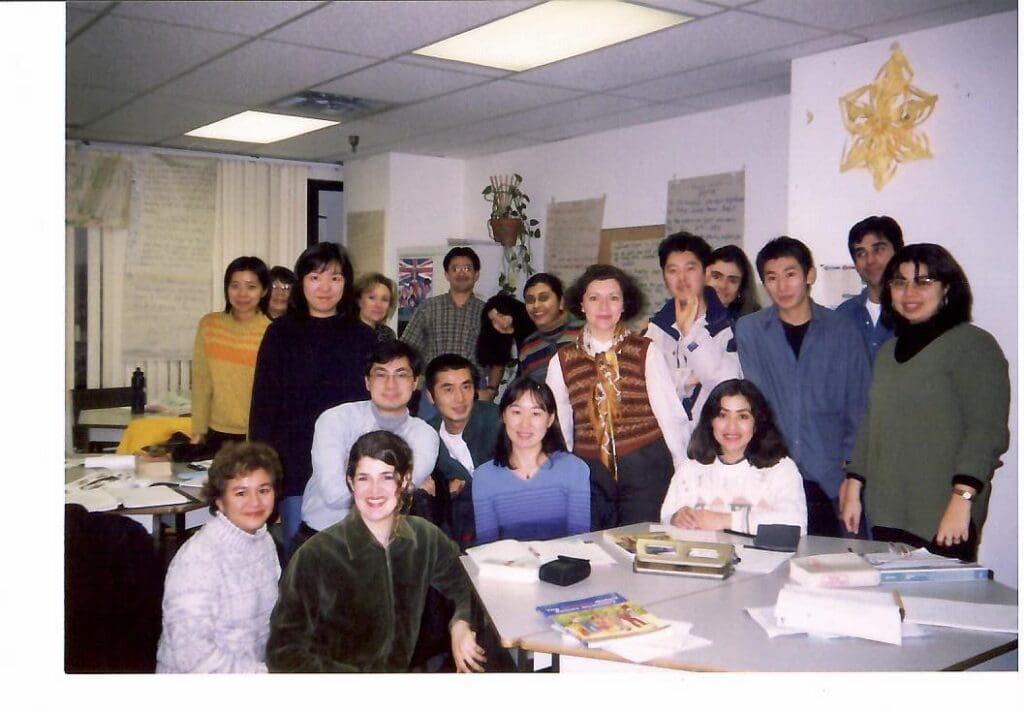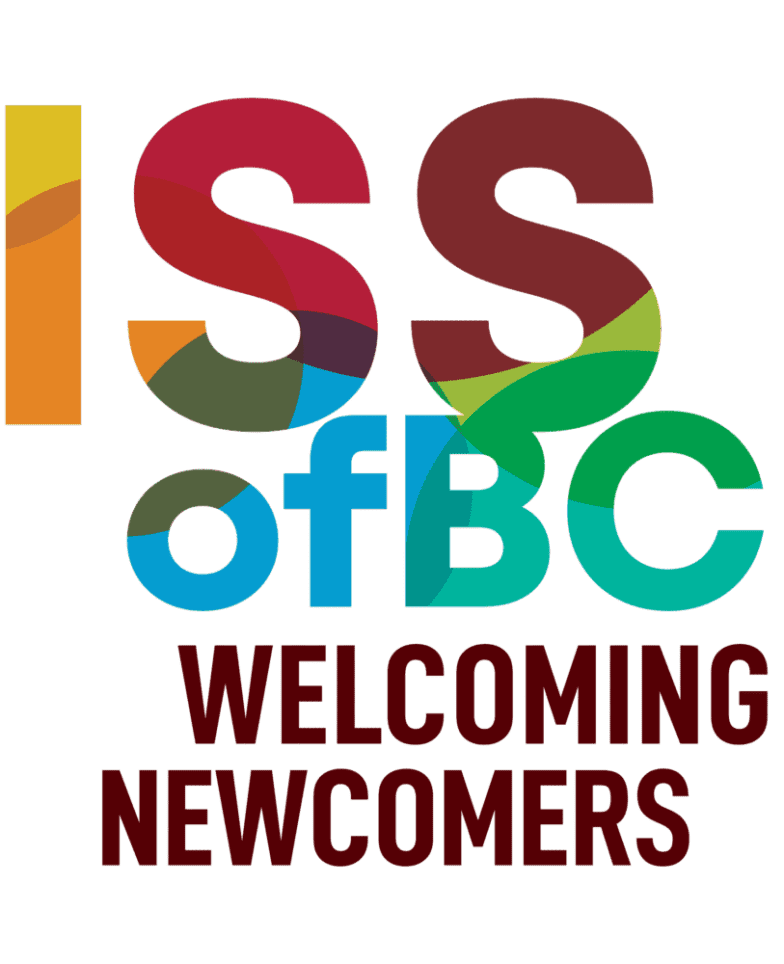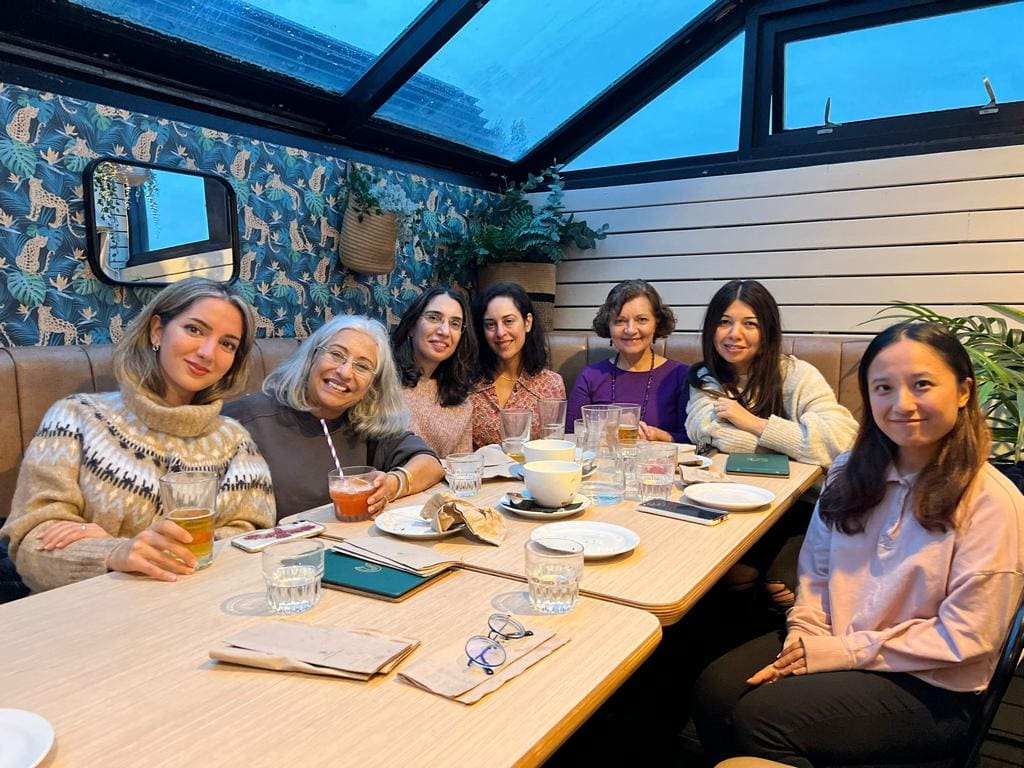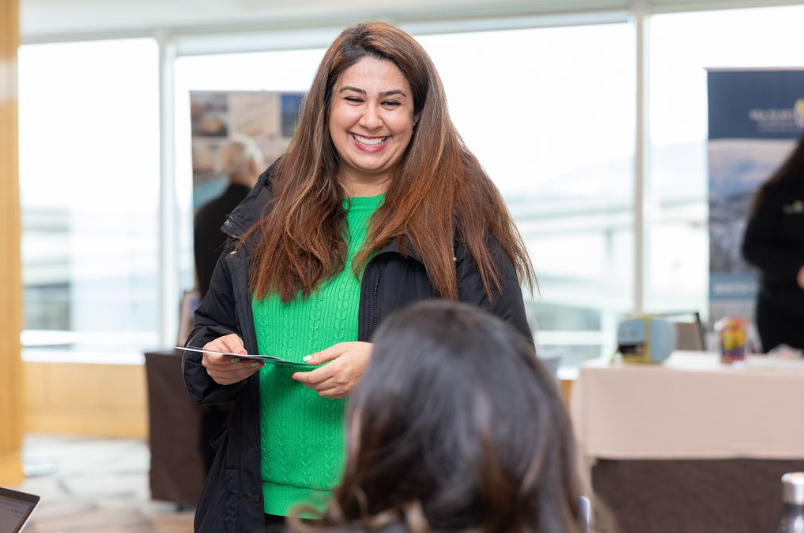Ljerka Anic, who has been an English language teacher at ISSofBC’s Language and Career College (LCC) for over 20 years, has seen the college and the students go from strength to strength. In this month’s Story of Hope and Learning, Ljerka talks about her proudest achievement, the Teaching English to Speakers of Other Language (TESOL) diploma. Read on:
_____________
The TESOL Diploma Program started as a Teaching English in a Foreign Language (TEFL) certificate program in February 2001. TESOL was designed to help teachers teach in a communicative, student-centered way. I started teaching this course when my son was 6 months old. He’s now 22 years old, with 5 years of experience as an engineer. This is a constant reminder of how much the program has grown.

Ljerka with one of her first classes at LCC
It became the TESOL Diploma program in 2006 and since then, we have trained over 1,500 ESL/EFL teachers from all over the world. Up until the pandemic, I taught one of the five TESOL components, Grammar 101.
Although challenging, this course is also very rewarding, and I’ve learned so much from my students. The best part has always been the collective joy as students climbed the very steep learning curve but ultimately discovered their talent for teaching.
I have always enjoyed seeing students grasping key concepts that they didn’t consider before and making new friendships through the course and, of course, their smiles on graduation day.
Many of our students have done their Practicum in our classes and stayed on with LCC as Instructors.
Throughout the TESOL program, grades have been high, and attendance has stayed steady at over 90%. I believe this is due to the positive classroom atmosphere we create and a cooperative rather than competitive approach to teaching. We aim to inspire our students not just to pass the course, but to excel in their new skills.

Ljerka practices grammar with her students
New challenges bring new opportunities!
Then in 2019, the interest in in-person classes waned and the interest in online classes with self-study component grew quickly. I personally couldn’t see how this new method of delivery would work successfully and was very reluctant to reduce the amount of in-person teaching within the TESOL program.
And then March 2020 turned everything upside down and inside out. We started teaching online from home, finding new ways to engage students and help them learn.
In April, I received a call from Arina Tanase (Senior Manager at LCC) and Bonnie So (Associate Director at LCC) asking me if I would teach all five TESOL components online all by myself. I said yes without giving it a second thought! I was way out of my comfort zone anyway!
There was a lot of support from the instructors’ team, IT, and Bonnie, and to my surprise, by my first class of online students. They were guiding me as much as I was guiding them, and we all went out of our way to do the best job we could.
Another unexpected gift of this shift to online teaching was that I was teaching English as a Second Language online, so I had a first-hand experience that I could transfer on my TESOL students. They soon realized that they were learning how to teach online, in-person and blended style, all at the same time. We joked it was a “buy one, get two free” situation.
Despite these changes, the performance, the attendance, and the grades were fabulous! The class I had thought would be a disaster was a feather in my cap. I have never been so happy to be proven wrong. Even online classes can be good for making friends, and some groups organized picnics during the pandemic or met up in cafés when the restrictions eased up.
Soon we started Practicum online, then in-person in a blended class. Again, my Practicum students surprised me with their flexibility and ingenuity. Having them in this type of class was also helpful for the students who got the extra attention from having two or even three teachers there to help them.
Reflecting on TESOL’s successes
In the past ten years, we have had 400 practicum students, and 99% of them successfully completed their program.
In 2022, we had over 40 Practicum students, and many of them are now at the ISS as instructors.
These days, I always have a practicum student in my classes, or sometimes two depending on their schedules, and it is always win-win-win situation. They support each other and they support me as much as I support them. I show off activities and games I have developed, and my Practicum students develop even better ones the next day, and then they show off.
Online students receive much more attention, as well as in-person students. Practicum students get to practice everything they learned during the program, and they build confidence in a stress-free environment, while I get to witness the joy of learning and them building bridges of communication. My students get very attached to their student teachers and miss them when they graduate.
Sponsoring a student teacher may look daunting, too much work, and so on, but it can be very rewarding. At a recent Practicum Workshop at LCC we’ve also found a way to make the sponsorship process more efficient, so I’m looking forward to introducing these innovations to new student teachers.
Training a new generation of teachers
What I’ve found personally rewarding is watching my students develop new skills and succeed in doing something that seemed daunting only a week earlier. We cultivate an atmosphere of cooperation, and students help each other and bond in the process. Watching them forge new friendships and celebrating each other’s success is a very satisfying feeling. This program allows me to share my creativity in finding ways to improve teaching and inspire my students to tap into their own talents.




